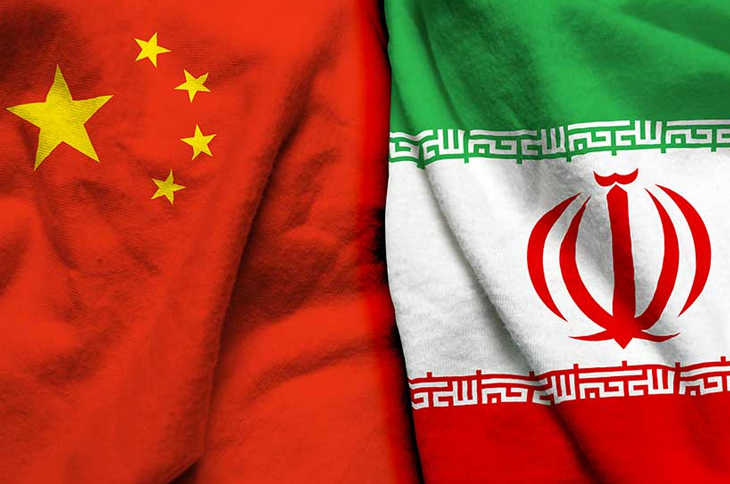
China-Iran Deal: A Checkmate to India
Published 31st July 2020 by Op-Ed Wamika Kapur under International Strategic Studies

China-Iran Deal: A Checkmate to India
The 25-year Iran-China comprehensive strategic partnership deal, on investments and military collaboration, is a game-changer for the region. The 18-page leaked document highlights a road plan for cooperation across telecommunication, banking, railway, energy sectors and establishment of trade-free zones. Built on the original 2016 agreement, it will have multifaceted implications on all associated players, especially U.S, Russia and India. However, India’s Non-Alignment 2.0, between the U.S and China, has lost India both its strategic and economic advantages in the region. The deal, when executed, will be China’s geopolitical checkmate.to India.
The opening statement of the leaked Iran-China deal states “Two ancient Asian cultures, two partners in the sectors of trade, economy, politics, culture and security with a similar outlook and many mutual bilateral and multilateral interests will consider one another strategic partners.” Iran and India have deep rooted historic relations, including a shared border till 1947. They also have strong commercial, energy, cultural and people-to-people links. Considering this, the crux of India’s loss lies in the fact that it could have easily been read with India, instead of China, a missed opportunity. This was further punctuated by Iran’s decision to ignore India in the Chabahar port deal, an exclusive investment deal signed between India and Iran. A railway project which was meant to be an Iran-Afghanistan-India trilateral arrangement to reach Afghanistan and Central Asia bypassing Pakistan. The cited reason for Iran to proceed alone with the railway from Chabahar port to Zahedan was funding issues on the Indian end. However, with the China-Iran deal looming in the background, it seems too convenient.
The major implications on India can be assessed by looking at the original intention behind the Iran-India deal on Chabahar port. It envisioned a lifeline to Afghanistan and a multi-modal transport of goods and passengers between India, Iran and Afghanistan. It was America’s counterweight to Chinese investments in Pakistan’s Gwadar port under the China-Pakistan Economic Corridor (CPEC). India, along with eight other countries, was given a time limited exemption, for 6 months, from sanctions in Chabahar, for reconstruction and development in Afghanistan. Unfortunately, it was difficult to find vendors for implementation. Now, India’s access to Afghanistan would be restricted to the air route. China is already overseeing the Afghanistan-Pakistan Action Plan for Peace and Solidarity (APAPPS) and strengthening cooperation mechanisms. This new collaboration between China, Pakistan, Iran and Afghanistan can be extended to Russia, covering the Gulf and Central Asia region, which will isolate India. Ongoing border issues with Pakistan, Nepal, China have opened India on multiple fronts, east and west. Another aspect to consider would be China’s expanding presence in the Indian Ocean with it being able to connect Chabahar in Iran, Gwadar in Pakistan with the Port of Djibouti.
One of the biggest criticisms of Indian foreign policy is that in guise of pragmatism, it forgets one of its own land's core strategic thinkers. Kautilya’s Mandal theory would ensure that India keeps China and Pakistan in check by becoming staunch allies with Iran. However, under Trump’s “maximum-pressure” campaign, India chose to stop its oil trade with Iran, its top 3 oil suppliers, and disallow Iranian bank presence in India. While the P5+1 Iran deal was signed in 2015, the U.S chose to withdraw in 2018 leaving India in a very tricky situation. India keeps jumping on distant allies for a region where they have a limited presence.
There have been counter claims from the Iranian side that India has not been excluded from the railway project. However, this MOU, for the construction of the Chabahar-Zahedan railway, was signed as a part of a set of 12 MOUs under the ‘Trilateral Transit Agreement’ (Chabahar Agreement) between India, Iran and Afghanistan. It included a $85 million investment for equipping the port and credit of $150 million for development of the 1st Phase of Shahid Beheshti port at Chabahar, where India Ports Global Limited (IPGL) Company opened its office in 2018.
The rail line is the aspect of the project with the most severe geo-political ramifications. It is a pressure tactic as India has often been criticized for having long gestation periods for investments projects which fail due to bureaucracy. This can be seen in Iran’s 2019 declaration to not wait for India on the Farzad-b gas project.
If America decides to pull out of Afghanistan, their presence in the region would be severely out-numbered by countries in alliance with China under the Belt and Road Initiative (BRI), which India rejects. Further, this nulls Chabahar’s central role to the “International North-South Transport Corridor” (INSTC), India’s counter to BRI. It was a plan to network between Iran, Russia and India across the Indian Ocean and Gulf Ports and rail centers towards the Caspian Sea, St. Petersburg and northern Europe. The domestic, regional and international economic implications of its competition with China can already be felt in India. However, the geo-strategic implications will slowly unravel in the upcoming future.

Wamika Kapur
Wamika Kapur is currently a Phd Candidate at Seoul's Yonsei University. Previously, she was a Research Assistant to Legislators (RAL) at Rajiv Gandhi Institute of Contemporary Studies (RGICS), a 25-year old national policy think tank in India. Prior to her time at RGICS, she studied law at the Indian Law Society (ILS) Law School, Pune, India in 2014 and pursued her Masters in East Asian Studies from University of Delhi in 2016, with a concentration on Korea and China. Her research is focused on US-China relations, Technology & Politics, Foreign Policy and National Security. She is also a Fellow at Global Policy Insights.
Recent Articles
- Models of Public Service Delivery for the Homeless in India: A Comparative Analysis and an Agenda for the Future
- Discussion with H.E. Ambassador Christoph Heusgen
- Round Table Discussion with H.E. Ms. Louise Blais
- China-Iran Deal: A Checkmate to India
- Chinese Belligerence Increases the Number of People Identifying as Taiwanese
- Interview with Sylvia Mishra on India's Defense Relations with Major Powers in the Post- COVID-19 World
- Peering into the future - Economy, Society amd World Politics after COVID-19
- Humanity better off with world order without ‘Chinese characteristics’
- Military Recruitment in the U.S., China, and Russia
- A Comparative Analysis of Key Structures & Responses to the Syrian Refugee Crisis in Germany, Turkey, and the United States
- Analysing the Abrogation of Article 370
- Rethinking India’s Strategic Choices for National Security
- Global Policycast: Geopolitics and Economic changes in Ukraine & Eastern Europe, Christina Pushaw (expert on Eastern European Affairs) in conversation with Arpit Chaturvedi (CEO, Global Policy Insights)
- Syria in ruins as war enters 9th year
- Lord Howell of Guildford’s key note speech at Global policy insight’s seminar on Post Brexit World: UK and the Commonwealth
- A Post - Brexit Britain & India Partnership can Unlock the Potential of the Commonwealth
- Lessons from the Great War : Inevitability versus Institutions
- UK-India Trade Relations: The Long Road Ahead
